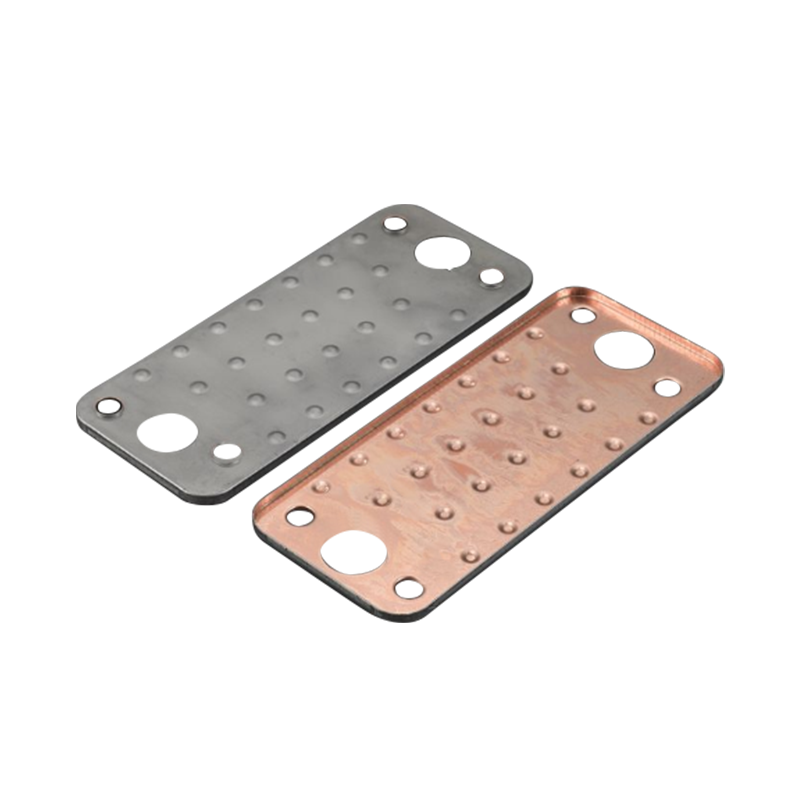If you need any help, please feel free to contact us
- Silver Alloy Electrical Contact Materials
- Copper Alloy Electrical Contact Materials
- Multi-layer Composite Materials
- Special Type Of Wire
- Thermal Bimetal Material
- Copper Steel Composite Material
- Copper Aluminum Composite Material
- Silver Copper Composite Material
- Copper Nickel Composite Material
- Aluminum Nickel Composite Material
- Aluminum Steel Composite Material
- Noble Metal Complex
- How Customized Tungsten Carbide Rods Enhance Precision in Electronics Manufacturing and Medical Applications
- How Tungsten Carbide Nozzles Revolutionize Performance in Industrial Applications
- Hongfeng Collaborates with Wenzhou University on Themed Party Day Activity to Boost Industry-Academia Integration
Mastering the Art of Welding and Fabrication with Copper Steel Composite Material
As technology advances and industries demand higher efficiency and performance, copper steel composite materials have emerged as a game-changer in many sectors. These materials, created by combining the durability of steel with the superior conductivity of copper, have revolutionized how manufacturers approach welding and fabrication. At HongFeng, we’ve witnessed firsthand how copper steel composites can deliver exceptional strength, corrosion resistance, and thermal conductivity, all while maintaining excellent weldability. Understanding how to properly work with copper steel composite material is essential for ensuring optimal results in production, and in this article, we’ll explore the best welding practices that help unlock the full potential of this versatile material.
The welding of copper steel composite materials requires an understanding of both the copper and steel components. Copper, with its high electrical conductivity, is commonly used in applications where efficient power transfer is critical. Steel, on the other hand, offers robust strength, making it ideal for structural applications. Combining these two materials brings out the best of both worlds, but this also means that careful attention must be paid during the welding process to ensure a strong, reliable bond without compromising the properties of either metal.

For optimal welding, it’s important to select the right method. Fusion welding techniques such as TIG (Tungsten Inert Gas) and MIG (Metal Inert Gas) welding are commonly used with copper steel composites, as they provide precise control over heat input and help prevent damage to the material’s delicate copper layer. These methods allow for minimal heat distortion, reducing the risk of cracking or warping. Additionally, they ensure the copper layer remains intact and preserves its excellent conductivity, which is crucial for applications in electrical systems and other energy-efficient solutions.
One of the biggest challenges in welding copper steel composite material is ensuring that the bond between the copper and steel is strong and free of defects. This requires careful heat management, as copper has a lower melting point than steel. Too much heat can cause the copper to melt and lose its structural integrity, while insufficient heat can result in weak welds. Skilled technicians can overcome this challenge by fine-tuning their equipment and selecting appropriate filler materials to create a strong, long-lasting bond that meets the material's mechanical and electrical performance standards.
Copper steel composite materials also offer superior corrosion resistance, which is vital in many industrial and electrical applications. When welded properly, these materials can withstand harsh environmental conditions, making them an ideal choice for outdoor applications such as power transmission lines, grounding systems, and military equipment. Their ability to resist oxidation and corrosion enhances the durability of finished products, allowing them to perform effectively over an extended period with minimal maintenance. This feature is especially valuable in industries that require high-performance materials, like aerospace, telecommunications, and energy sectors.
Furthermore, welding copper steel composite materials requires attention to detail when it comes to post-weld cleaning and treatment. After welding, the welded areas should be properly cleaned to remove any oxides, flux residues, or contaminants that could affect the material's performance. This ensures that the final product maintains its conductivity and strength, while also preventing potential issues like galvanic corrosion or material degradation.
At HongFeng, we understand that fabricating copper steel composites isn’t just about the right tools or techniques – it’s about providing solutions that address the specific needs of our customers. Whether you're designing high-voltage switches, circuit breakers, or energy-efficient wiring systems, our advanced copper steel composite materials ensure you achieve the highest standards of performance. By following best practices in welding and fabrication, manufacturers can unlock the full potential of these versatile materials, enabling them to meet the evolving demands of modern industries.
Incorporating copper steel composites into your products doesn’t just enhance their electrical and mechanical properties—it also makes them more reliable, durable, and cost-effective over the long term. As more industries turn to advanced composite materials for their projects, the ability to work with these materials will become an increasingly important skill. At HongFeng, we’re committed to providing you with the materials, knowledge, and support necessary to make the most of copper steel composite materials, and to help you stay ahead in a competitive market.
- Tel:
+86-18857735580 - E-mail:
[email protected]
- Add:
No. 5600, Oujin Avenue, Wenzhou Marine Economic Development Demonstration Zone, Zhejiang Province, China
Copyright © Wenzhou Hongfeng Electrical Alloy Co., Ltd. All Rights Reserved. Metal Composite Materials Manufacturers

 en
en English
English Deutsch
Deutsch







































































